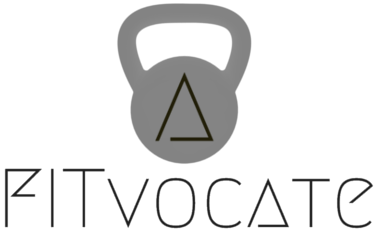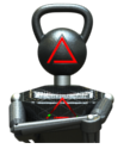
There’s no better answer to the age old question of “Do you even lift?” than having a v-taper body shape. It’s the image that most kids sketch when asked to draw a picture of a muscular person. So, we all know what it is, but may be unfamiliar with its official term used by people in the fitness world – The V-Taper.
What Is The V-Taper?
The v-taper body shape is having wider shoulders than your waist. When you look at yourself in the mirror, head on, you’ll see your torso narrowing from your shoulders to your waist; this narrowing is the V-Taper.
What Muscles Are Involved To Give This Appearance?
The muscles that are emphasized to give this appearance are: your shoulder muscles namely the Medial Deltoid (Side deltoid), and your Latissimus Dorsi (Large Muscles that sit on the side of your back).
How Do I Grow These Muscles?
Your shoulders are a very responsive muscle group for growth because they have the most androgen receptors. Receptors are “docking sites” that are attracted to and target specific chemical or hormonal compounds in order to initiate some action. In this case, androgen receptors bind to androgenic hormones like testosterone and dihydrotestosterone, and promote muscle growth and strength. Performing consistent challenging exercises on a targeted muscle group promotes an increase in androgen receptors for a given area. With the target of the V-Taper, we will be focusing on challenging exercises for the Side Deltoid and the Lats.
What Makes An Exercise Challenging?
Challenging means you are using the heaviest amount of weight to properly perform each rep of each given set (emphasizing on properly executed). Proper execution doesn’t mean you’re lifting the heaviest weight possible while destroying your back or any other part of your body – proper execution of complex compound movements requires (like most things) a humble beginning of lower weight and building the muscle memory required to properly perform the movements – you do these humbling steps in the very beginning, all in understanding that you’re not an expert and that in due time you will become proficient in the movements.
What Exercises Should I Do?
The best exercises that will get you to reaching this goal are: Lateral Raises, Dips, and Pull Ups
Lateral Raises are performed by standing in an upright position, holding Dumbbells or Kettlebells in each hand at your sides. While keeping your arms straight, bend them at the shoulders, raising your arms at the same time to your sides (Making a T shape with your body), at the top position rotate your wrists to point your thumbs towards the ground. Slowly reverse this action to the starting position. That’s one rep.
Dips are performed on a dip bar, or if you don’t have a dip bar, use the side of a bench. Start by grabbing the bars to support your entire body weight with fully extended arms, this is the starting position. Slowly descend at the elbows and shoulders until your chest reaches the bar. Press up by reversing this action. That’s one rep. To make this more challenging use a weighted dip belt to add weight to your dips.
Pull Ups are performed on a pull up bar. You can perform a pull up or a chin up. A pull up emphasizes the use of your back muscles (namely the lats) and a chin up pretty much does the same except it emphasizes the use of your biceps to complete this movement. A pull up is when you grab the bar with your palms facing away from you, and with a chin up your palms are facing towards you. We’ll focus on pull ups here. Start by grabbing the bar (with your palms facing away from you), hang with your arms fully extended and this would be your starting position. Slowly ascend, bringing your head to the bar (Visualizing that you’re pulling the bar to you is the best approach to this movement). At the top, slowly descend, reversing the action. That’s one rep. To make this more challenging also use the same weighted dip belt to add weight to your pull ups.
There are many more exercises you can perform that will get you to the V-Taper. Fortunately for you, Fitvocate has trillions of free workout routines that you can follow to help you reach this goal. Follow along with these exercises and keep it Challenging.
We are advocates of your goals!
-Brian
- Getting Started
- Muscle Size
- Tips
- Weight Training

